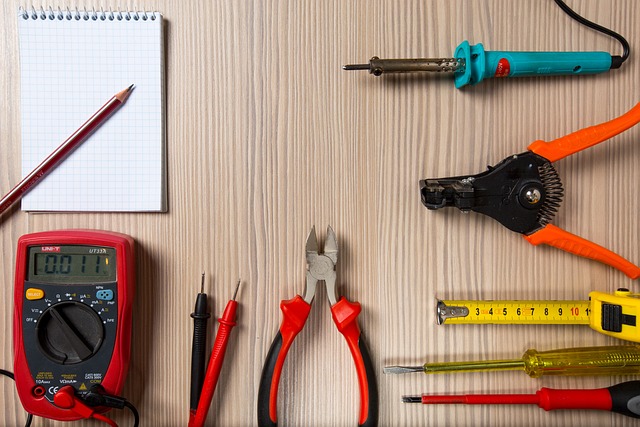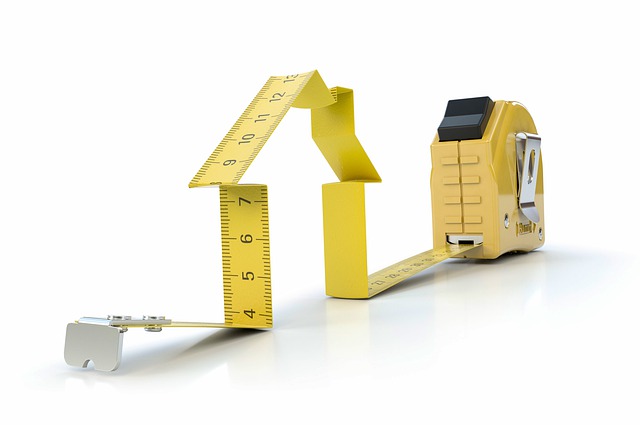This guide provides essential information on ensuring safe and efficient installation, maintenance, and repair of household appliances as part of effective Home Repair and Maintenance practices. It highlights the importance of precise measurements, verifying power supplies, and clearing maintenance access during planning, with a strong emphasis on safety protocols like deactivating the main breaker before electrical work to prevent electric shocks. Adherence to manufacturer instructions and compliance with local building codes are also paramount for successful installation. For optimal performance, it is crucial to secure all connections with correctly gauged wires and use professional tools for any cutting to avoid future risks like leaks or fires. After installation, regular maintenance inspections are vital to extend appliance life; this includes checking hoses, cleaning condenser coils, and confirming the appliance functions within its specifications. The guide also offers insights into diagnosing and rectifying common malfunctions, advising on when to seek professional help for more complex repairs. By following a disciplined approach to routine checks and servicing, homeowners can prevent minor issues from becoming major problems, thereby preserving warranty coverage, enhancing appliance performance, and saving on repair costs in the long run. This proactive care is key to keeping your home's appliances in top condition and is an indispensable aspect of effective Home Repair and Maintenance.
Maintaining a well-functioning household is a cornerstone of comfortable living. As such, appliance installation and repair are integral aspects of home upkeep that ensure your domestic systems run smoothly. This article delves into the best practices for installing appliances safely and efficiently, provides a comprehensive guide to troubleshooting common issues, and emphasizes the importance of scheduled maintenance for prolonging the life of your home’s appliances. By integrating these strategies into your home repair and maintenance routines, you can enjoy uninterrupted service and avoid costly repairs or replacements.
- Best Practices for Safe and Efficient Appliance Installation in Homes
- Troubleshooting Common Appliance Issues: A Comprehensive Guide to Repair Techniques
- Scheduled Maintenance: Prolonging the Life of Your Home's Appliances Through Regular Check-ups
Best Practices for Safe and Efficient Appliance Installation in Homes

When undertaking appliance installation at home, adherence to safety protocols and efficiency measures is paramount for long-term functionality and peace of mind. Proper planning is a cornerstone of successful appliance installation; it involves measuring the space accurately, verifying the power supply requirements, and ensuring there is adequate clearance for maintenance access. Safety precautions such as switching off the electricity at the main breaker before installing or repairing an electrical appliance are non-negotiable to prevent electric shocks. It’s equally important to follow manufacturer guidelines and local building codes during installation.
For safe and efficient appliance operation, ensure that all connections are secure and use only the appropriate gauge of wire to match the power demands of the appliance. Additionally, professional-grade tools should be used for tasks like cutting pipes or wires, which can prevent damage to the unit and avoid future leaks or electrical fires. Regular maintenance checks post-installation, as part of home repair and maintenance practices, can extend the lifespan of your appliances. This includes inspecting hoses and connections for wear and tear, cleaning condenser coils, and ensuring that the appliance operates within its specified performance range. By implementing these best practices, you can ensure that your appliances are installed and repaired in a manner that is both safe and efficient, contributing to the overall well-being of your home environment.
Troubleshooting Common Appliance Issues: A Comprehensive Guide to Repair Techniques

When home appliances malfunction, timely troubleshooting and repair are crucial to maintain a smoothly functioning household. This guide offers a systematic approach to diagnosing and fixing common issues across various appliances. Understanding the basics of appliance operation can significantly ease the process of identifying faults. For instance, if your refrigerator is not cooling properly, it’s often a matter of checking the thermostat settings or inspecting the condenser coils for dust accumulation. Similarly, dishwashers that fail to drain correctly might have a clogged filter or a malfunctioning valve, which can typically be resolved by clearing the blockage or replacing the faulty component.
Regular home repair and maintenance can prevent many issues from arising in the first place. This includes routine checks for wear and tear on appliance parts, cleaning or replacing filters, and ensuring proper ventilation to extend the lifespan of your appliances. When a problem does occur, it’s important to address it promptly to avoid further damage or safety hazards. For complex repairs that exceed DIY capabilities, professional assistance should be sought to ensure the job is done safely and effectively. This guide will also cover advanced troubleshooting steps for more intricate appliance issues, such as electrical faults or gas leaks, which require specialized knowledge and tools. With this comprehensive guide at hand, homeowners can confidently tackle a wide range of appliance repair tasks, contributing to the overall efficiency and reliability of their home’s systems.
Scheduled Maintenance: Prolonging the Life of Your Home's Appliances Through Regular Check-ups

Engaging in routine home repair and maintenance, particularly with regard to appliance check-ups, is a prudent strategy for extending their service life. Regularly scheduled maintenance not only prevents minor issues from evolving into major malfunctions but also ensures that your appliances operate at peak efficiency. By adhering to a maintenance schedule, homeowners can anticipate the wear and tear that inevitably occurs over time, allowing for timely repairs or adjustments. This proactive approach to appliance care can significantly reduce the likelihood of unexpected breakdowns and costly emergency repairs. Moreover, consistent maintenance helps maintain warranty coverage and can even enhance the performance of your appliances, providing you with greater reliability and better functionality in your daily tasks. It’s a small investment of time and resources that can lead to significant savings and hassle-free operation over the long term. For those looking to preserve the longevity and functionality of their home’s appliances, routine maintenance is an essential aspect of home repair and maintenance practices.
Effective appliance installation, repair, and maintenance are pivotal aspects of home upkeep. By adhering to best practices for safe and efficient installation, as outlined in our guide, homeowners can ensure their appliances function optimally from the outset. When issues arise, the troubleshooting tips provided in our comprehensive repair techniques section serve as a valuable resource to address common malfunctions without delay. Moreover, the importance of scheduled maintenance cannot be overstated; through regular check-ups, the lifespan and performance of household appliances can be significantly prolonged. In essence, integrating these home repair and maintenance practices into your routine contributes to a safer, more efficient, and more reliable living environment. Homeowners who prioritize these measures will likely experience fewer disruptions and enjoy the longevity and reliability of their home’s appliances.
